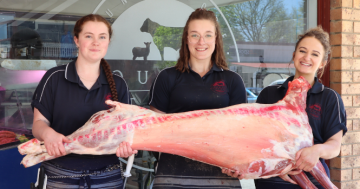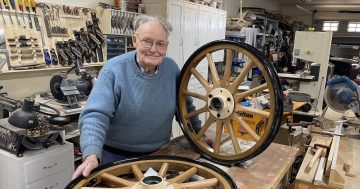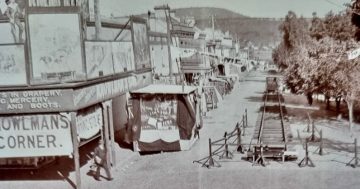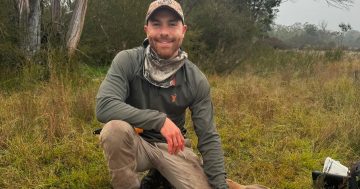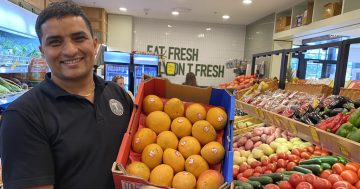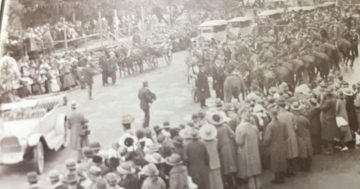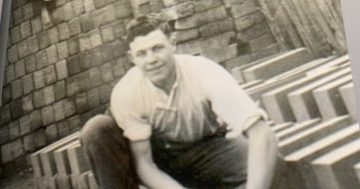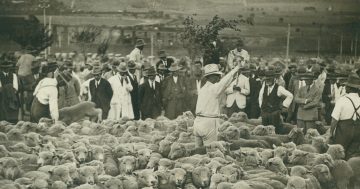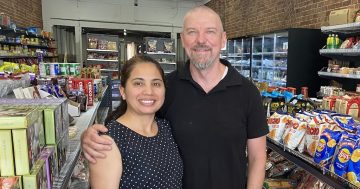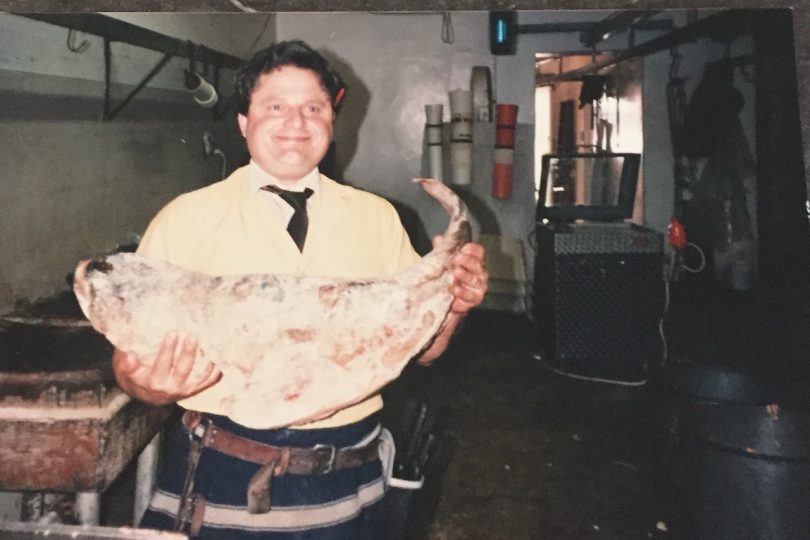
A qualified electrician, Bruce Booby switched to being a butcher for a long and rewarding career in Goulburn. Photo: Supplied.
In the days when every butcher had a pencil on their ear for writing prices on butcher’s paper, and knives at the ready on their belts, Bruce Booby became a family favourite in Goulburn.
Customers became like his own family, as did his workmates. Over 23 years, he worked alongside three generations of Doughtys: Allan, his son Roger, and grandson Andrew.
“When I first started butchering, there were around 18 butcher shops in Goulburn,” he says.
Only four butcher shops remain in the city today, and Coles, Woolworths and Aldi supermarkets continue slicing into the margins of independent operators.
An electrician unable to find work in his trade, Bruce and his wife, Kathy, left Gundagai and arrived in Goulburn in 1970. Finding work at Goulburn abattoir, he remembers the icy mornings in winter being even colder at work.
“You would have a break every hour to go outside and warm yourself up because it was like a big cool room you were working in,” he says.
Everyone at the abattoir was busy earning good wages as sheep, pigs and cattle were slaughtered for the Goulburn market and exported to the US. Quickly learning how to handle and sharpen seven-inch boning knives, Bruce was soon exceeding his tally.
“You could make $600 to $700, and with ‘overs’, $1000 to $1500,” he says. “A lot of blokes liked it.”
But work was unreliable, which management blamed on low stock numbers.
After two years of rheumatic fever, Bruce was left unfit for work for about six months. Soon after his return, he landed a job as an apprentice butcher with Harold ‘Tiny’ Duck. The pay was nowhere near what he had been earning at the abattoir, but the work was more stable.
He completed his apprenticeship and later left for Coles where he managed the butchering section for seven years.
“I didn’t mind Coles, but I didn’t like not working with the public,” says Bruce.
He remedied that when he joined Doughty’s Butchery.
“You get into relationships with your customers,” says Bruce. “A lot of them follow you. Other butchers would leave a shop and their customers would follow them around.”
He remembers the weekly order for “old Mr Cooper”, the Bells from Yarra, and the Maple-Browns from Braidwood Road.
“Roger had a pretty big shop,” says Bruce. “He had eight or nine butchers working there. When I was with Tiny, there were about 18 butchers – a lot back in those days.”
The meat came from the abattoir to be cut up for retailing.
“Ray Harvey brought the meat in,” says Bruce.
Local butcher shops also bought meat from Bill ‘Chops’ Murray and John Murray.
“John had four or five trucks and delivered all over the place, including Yass and Canberra,” says Bruce.
“If Roger went out and bought his own sheep, the abattoir would have hearts, kidneys, all that kind of meat. The butcher shops would give all that away to every-day and every-week customers, even the lamb shanks.
“Now they trim them back as French cutlets and lamb shank cutlets and get good dollars for it.”
After leaving Doughty’s, Bruce worked at several other butcher shops. His working week included Saturday mornings, which ended at 11 am initially, then extended over the years by an hour or so up until 4:30 pm as butcher shops opened for longer as they faced more competition.
“You only had one day [in the week] to yourself at home,” he says.
Diagnosed with bowel cancer, Bruce gave up work and today his prognosis is looking positive. He says he is happy staying at home ‘playing’ with his vintage cars.
Roger Doughty, a foundation member of the Vintage and Veteran Car Club of Goulburn, often goes for a drive with Bruce, who is the club’s president. Kathy is not only is a keen member as well, but is the person responsible for getting him involved.
“She bought a 1928 Chev and when I started going out with her, I used to work on the car with her father, Jim Norman, and that’s what got me involved,” says Bruce.
Like the butcher shops he grew to know so well, the club’s membership is like an extended family for this favourite butcher.
Original Article published by John Thistleton on Riotact.







